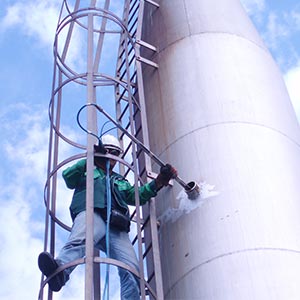STACK EMISSION MONITORING
Stack Emission monitoring is often referred to the air monitoring of an emission point. Typically, such monitoring is carried out on boiler stacks, exhausts from printers, discharges from bag filters, thermal oxidizers etc. and is performed on a regular, monthly or as per requirement.
Stacks from boilers and industrial processes will carry pollutants such as SOx, NOx, particles, solvents and other gases. These can have a detrimental effect on local air quality and for this reason such emissions are often regulated. The purpose of the monitoring will be to determine whether the emissions are below the limits.

Following Tests Are Performed for Stack Emission Testing:
The test methods entirely depend on the industry type and the number of pollutants released. The specified tests are carried out to determine a pollutant concentration and the emission rate.
- Temperature
- Velocity
- Particulate matter
- Sulphur dioxide
- Oxides of Nitrogen
- Carbon monoxide
- Ozone
- Pressure
- Oxygen
- Carbon dioxide
- Acid Mist (H2SO4)
- Flow rate
- Heavy metals
- Volatile Organic Compounds
- Humidity
- GHG Emissions